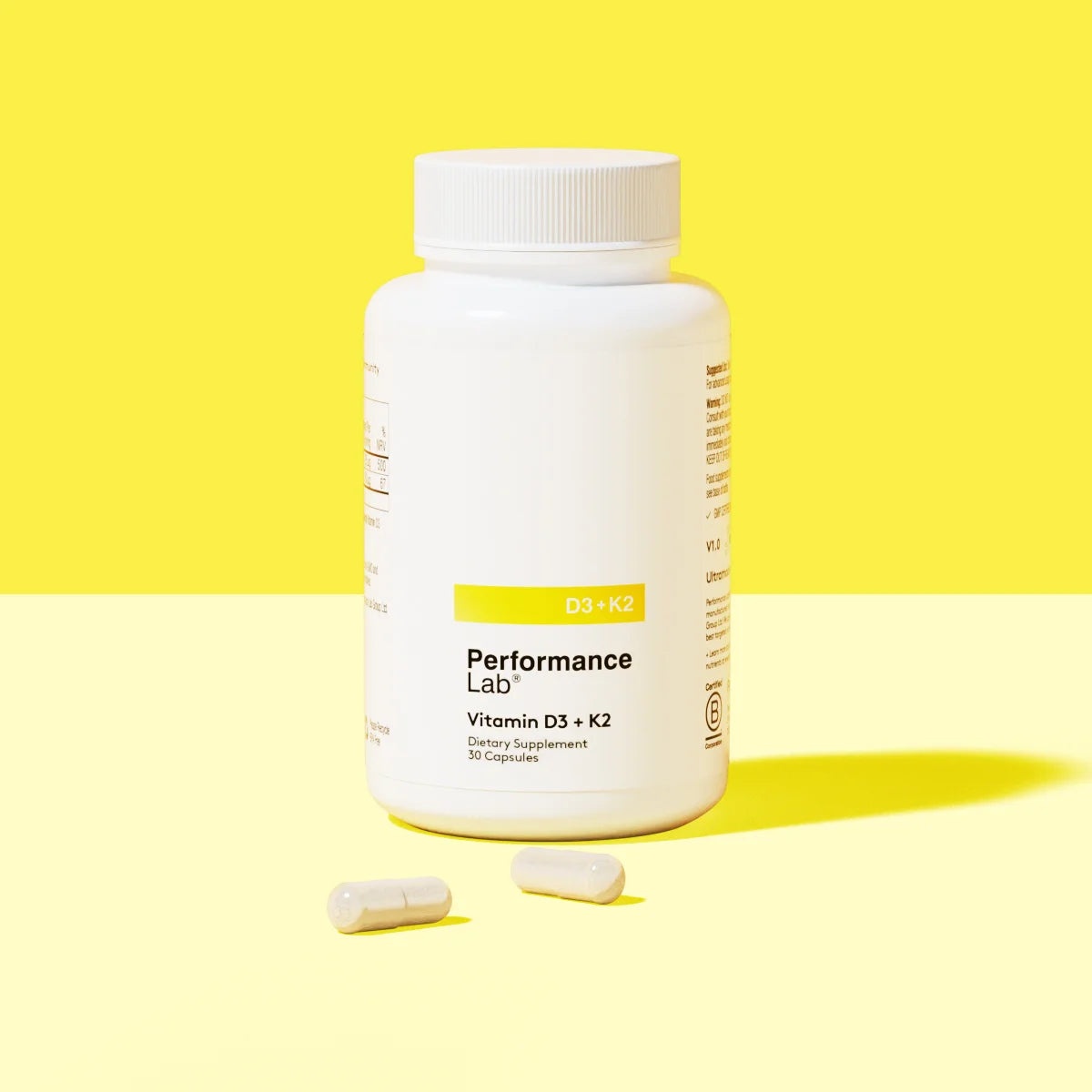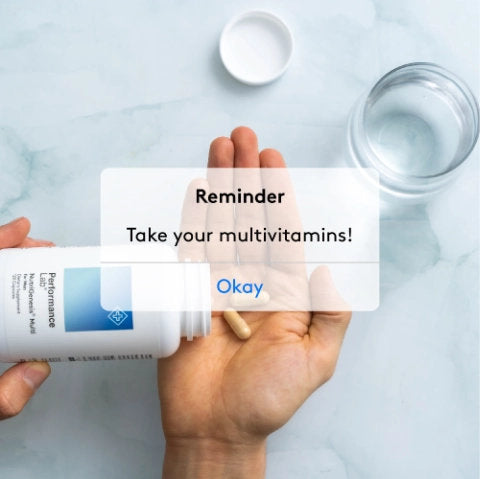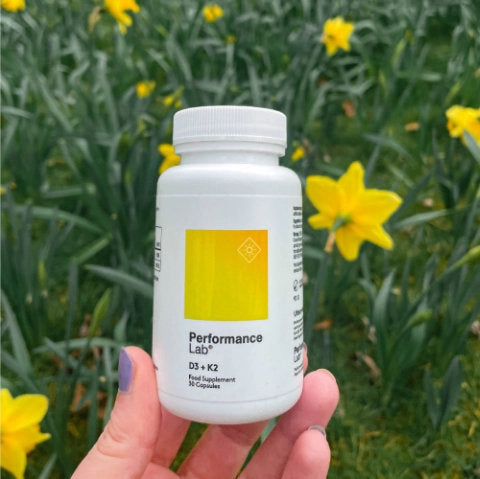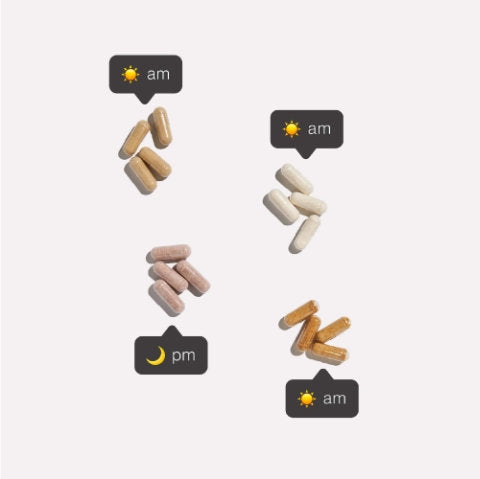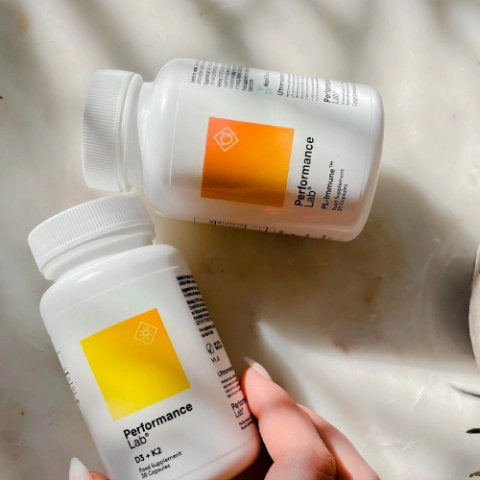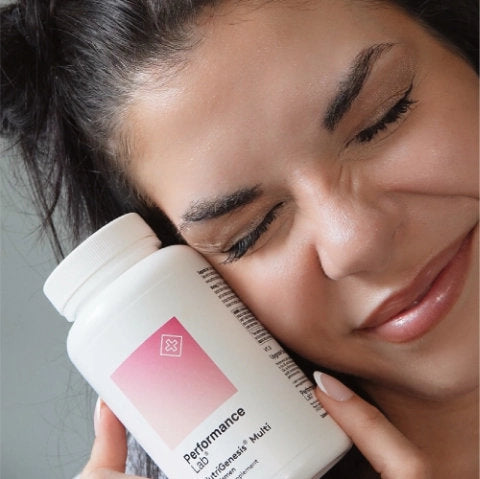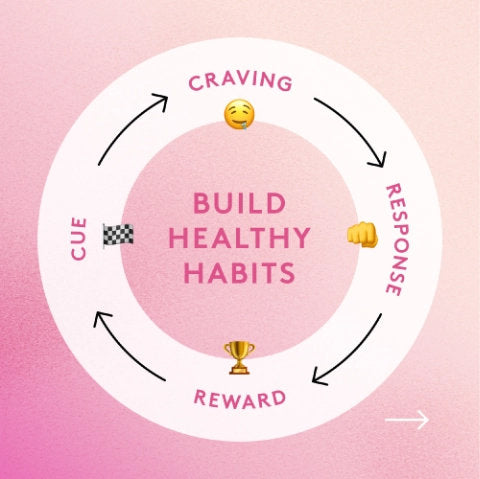Vitamin D for joint pain: does it work, and how should you take it for best results?
Whether you've been struggling with arthritis, injury, or another source of joint pain that keeps you from normal activities, this article will help you discover how vitamin D works and what you can expect from supplementation - science-backed.
If you're after a fast answer, see our key takeaways below.
Key Takeaways
- Vitamin D deficiency and sub-optimal blood levels are common and contribute to inflammation that can worsen joint pain. [17]
- Any pain relief from vitamin D supplementation is modest and tends to only benefit people who are deficient. [8, 10, 18]
- Vitamin D3 raises blood levels better than D2 and is the preferred supplement form. [19]
- Studies typically use 2,000–4,000 IU per day, higher than the 600–800 IU per day RDA. [5, 9, 15]
- Doses above 4,000 IU per day long-term can cause dangerous calcium buildup and toxicity. [20]
- Take your vitamin D supplement with a fat-containing meal and get a simple blood test to check your vitamin D status and keep levels healthy.
Joint Pain Is Surging, and These Stats Tell the Story
Joint pain - especially in the hip and knee joints - and arthritis are incredibly common. Between 1990 and 2019, the cases of osteoarthritis (OA) rose by 113%. [22]
The result: inability to engage in sports, social activities, or even basic everyday tasks.
Joint pain isn't just a nuisance but also a problem for productivity, with an economic burden of about $303 million USD every year in the U.S. from OA alone. Mind you, OA is just one of roughly 100 types of arthritis.
Vitamin D: The Answer to Joint and Knee Pain?
There is a light at the end of the tunnel, though. Joint pain can be managed, and one of the ways to support pain relief is through natural supplements. [21] That brings us to vitamin D.
A secosteroid hormone, vitamin D plays an important role in inflammation control, cartilage maintenance, and immune function; key factors in joint and bone health. [15]
Therefore, it's important to ensure optimal intake of vitamin D not just for joint comfort but also your overall health.
Why Many of Us Fall Short on Vitamin D
The best source of vitamin D is sunlight, which triggers a skin-based chemical reaction that forms vitamin D3. But ideal conditions, which include having a large part of your skin exposed to direct sunlight, are often hard to achieve.
Not to mention factors like being indoors, seasonal changes, using sunscreen, which blocks vitamin D absorption, or having metabolic issues that interfere with vitamin D's efficacy.
Some medications can interfere with the absorption and metabolism of vitamin D, which adds to the challenge of maintaining adequate vitamin D levels. [27]
It's no surprise, therefore, that up to 1 billion people are estimated to lack adequate levels of vitamin D. [1]
Did you know? In Europe, around 40% of people sit below 20 ng/mL (50 nmol/L) and around 13% are less than 12 ng/mL (30 nmol/L). [2, 3]
And when your body doesn't get sufficient vitamin D, a whole host of problems can arise.
What Happens When You're Low in Vitamin D
Virtually all cells, including cartilage (chondrocytes) and the nervous system, have vitamin D receptors.
The sunshine nutrient is essential for optimal health and a wide variety of biological functions, including:
- Bone growth and maintenance of bone mass
- Joint tissue maintenance
- Immune system function
- Hormone balance and reproductive health
And a lot more.
Here's what can happen when you're vitamin D deficient:
- Joint and muscle pain can flare
- Bones get weaker
- More frequent infections due to a weakened immune system
- You may feel fatigued due to less effective mitochondria (power generators in your cells)
- The risk of weight gain goes up from reduced insulin sensitivity
- Mood shifts due to problems with neurotransmitters and brain function
Vitamin D deficiency is also linked to chronic inflammation. This is because:
- Vitamin D helps your body regulate pro-inflammatory cytokines, which are your immune system's defense against pathogens. A deficiency can raise these otherwise essential molecules to abnormal levels, potentially leading to increased, ongoing inflammation.
- The epithelial gut barrier can become leaky, allowing for small particles to pass to the blood, triggering the body's inflammatory response.
- Vitamin D is an antioxidant that protects your body from free radicals, and a deficiency can increase oxidative stress, which causes tissue damage and inflammation.
The rise in inflammation can damage or irritate your joints and connective tissue. This plays a role in developing pain, stiffness, and other clinical symptoms of joint discomfort. Moreover, studies point to an increased risk and severity of rheumatoid arthritis (RA) as the result of vitamin D deficiency.
- In one cohort, 84% of RA patients were vitamin-D deficient vs 34% of controls; lower D levels were linked to higher disease activity. [4]
Does Vitamin D Help Bone Health, Arthritis, and Joint Pain? What the Research Shows

Vitamin D appears to be most helpful in deficient people and those who have chronic conditions affecting the liver or kidneys, or malabsorption of the vitamin D in the gut.
Evidence (OA, RA, joint pain)
-
Vitamin D relieves pain in knee osteoarthritis (OA)
In a 2017 meta-analysis of randomized controlled trials, a daily dose of 2000IU+ of vitamin D improved WOMAC pain and function in knee OA patients. The study authors noted that while joint pain was significantly diminished, cartilage health wasn't affected. [5] -
Knee osteoarthritis symptoms unaffected by vitamin D supplementation
This single study, which involved taking 2,000 IU of vitamin D a day, didn't find the same positive results as the meta-analysis above. After raising vitamin D blood levels to 36 ng/mL, patients took WOMAC tests and knee MRI, which showed no ability to reduce or alleviate knee pain or protect tibial cartilage volume compared with a placebo group. [6] -
Vitamin D calms inflammation in rheumatoid arthritis but doesn't affect pain
Across multiple RCTs, vitamin D had no meaningful effect on pain, but it lowered disease activity and key inflammation markers (DAS-28, CRP, ESR), and raised blood vitamin D levels. [7] - Vitamin D soothes musculoskeletal pain. In this randomized controlled trial of vitamin D-deficient individuals, 6 weeks of high-dose vitamin D3 led to small but measurable pain relief and easier time climbing stairs. Extending the supplementation window to 12 weeks showed possible but not certain additional support. [8]
-
4,000 IU/Day vitamin D soothes joint pain in rheumatoid arthritis over 6 months
In a 6-month double-blind RCT of 100 RA patients, taking 4,000 IU/day vitamin D reduced pain without major side effects. Authors noted that vitamin D "can potentially improve disease activity and pain management" and the need for more studies to confirm the long-term effects of vitamin D in RA. [9]
Overall Findings
- OA: Mixed. Research suggests modest pain relief, but it's not universal and the support might only be limited to specific groups of people, like those deficient in vitamin D. [10]
- RA: People with rheumatoid arthritis are consistently shown to have lower levels of vitamin D. Correcting this might support efforts in RA treatment and prevention. Supplementation may also aid in easing chronic pain states. [11, 12]
- General joint pain (not disease-related): tuning up vitamin D levels may help, though effects appear modest and not the same for everyone.
Potential mechanisms (why vitamin D might help joint pain, based on studies)
- Inflammation downshift: Vitamin D can attune pro-inflammatory molecules like Th17/IL-17 and TNF-α, which are key in inflammation of connective tissue lining (synovitis). [12]
- Cartilage & bone support: Adequate 25(OH)D supports subchondral bone and may play a role in protecting chondrocytes from damage. [13]
- Immune modulation in rheumatoid arthritis: Some research links deficiency in vitamin D to higher DAS28 levels (RA severity), and reports that correcting the deficiency can reduce disease activity. [12]
Bottom line: Vitamin D isn’t a universal painkiller, but correcting deficiency may help reduce knee pain or other joint issues for many. Studies on vitamin D's effects on cartilage are mixed. [14]
Vitamin D2 vs. D3: Which Is Better for Joint or Arthritis Pain Management
For maximal joint support, choosing the right form of vitamin D is important.
When it comes to vitamin D products, there are two main types: D2 and D3.
Vitamin D2, also called ergocalciferol, is mainly found in certain species of yeast and fungi. You may also see it in some fortified foods.
Vitamin D3, or cholecalciferol, on the other hand, is more readily converted into the beneficial, active form of the vitamin. Compared to D2, it has better absorption and longer half-life; meaning it stays longer in your system. Vitamin D3 is the same form that the body produces when exposed to sunlight, and is also found in egg yolks, liver, and fatty fish.
Read This Next: Foods That Contain Vitamin D
While both variations are absorbed in the small intestine, you may need much more vitamin D2 to get the same benefits as a smaller amount of vitamin D3.
Put simply: Vitamin D3's superior absorption and efficacy makes it the best choice for most people, including those seeking improved joint comfort. [19]
Vitamin D Dosage for Joint Pain & Arthritis
The official NIH dosage recommendation for vitamin D intake is 15 to 20 mcg (600–800 IU) per day. [15]
Studies have safely and successfully used dosages of up to 4,000 IU per day to address joint pain and arthritis symptoms. [5, 9]
However, let's not forget that vitamin D increases calcium absorption. Taking too much can be unsafe for your kidneys. Overly high levels of vitamin D may also contribute to bone loss through excess calcium. [23, 24]
Combining vitamin D with vitamin K2 helps to direct calcium into the right places - bones. This is especially helpful if you also use calcium supplements. [25, 26]
It's always wise to consult your doctor before taking higher than RDA doses of any vitamin - the sunshine one included.
Did you know? People with a body mass index of 30 or higher (obesity) have a 35% higher risk of vitamin D deficiency. [1]
Choosing a Clean, Reliable D3
If you’re ready to supplement, quality is as important as dosage.
Look for a D3 formula that’s plant-based, free of unnecessary additives, and third-party tested for purity and potency.
Performance Lab® D3 + K2 fits that profile: a liposomal D3 from algae paired with NutriGenesis® K2 MK-7 for optimal absorption, all in clean pullulan capsules.
It’s a straightforward way to cover both vitamins in one step; no fillers, no guesswork.
How to Take Vitamin D (Form, Timing, Injections)

The primary source of vitamin D for humans is direct sunlight exposure. It is also found in fatty fish and fish liver oil. Some foods, like milk and cereals, are often fortified with vitamin D.
However, many people aren't able to obtain enough vitamin D from the sun or diet, which is where supplementation comes into play.
Taking supplements is a common and easy way to get more vitamin D. The two most common supplement types are vitamin D2 and D3. As we've discussed, the D3 is generally considered more effective at raising blood vitamin D levels.
Vitamin D supplements come in various forms;
- Softgels
- Capsules
- Tablets
- Gummies
- Liquid drops
- Skin patches
The most popular options for vitamin D delivery are oral supplements. That said, all of these forms can help raise blood vitamin D levels, so the choice comes down to your needs and preferences.
Remember that vitamin D is fat-soluble and therefore needs to be taken with food (one that contains fat) for optimal absorption and efficacy. The timing of when you take vitamin D is less important than making sure you take it consistently.
Did you know? Low vitamin D levels are not just connected to increased pain, but also higher opioid consumption. [16]
Vitamin D injections - should you take them?
Only people with a confirmed vitamin D deficiency, especially those with inability to absorb the nutrient properly, older adults, and those with very limited sun exposure, should consult their doctor about taking vitamin D injections. This method bypasses the digestion; it directly and rapidly delivers vitamin D into the bloodstream.
Risks, Side Effects, and When Too Much Vitamin D Is Too Much
While vitamin D is essential for joint health, taking too much can be harmful. The ideal range for vitamin D blood levels is 50 nmol/L (20 ng/mL) and above, while anything significantly above 125 nmol/L (50 ng/mL) raises the risk of side effects. [15]
Excessive vitamin D levels can lead to high calcium levels in the blood and kidneys, also known as hypercalcemia. [1]
GI issues like nausea, vomiting, muscle weakness, confusion, or atypical thirst could also be pointing to vitamin D toxicity, a.k.a., high calcium blood levels. Therefore, skip megadoses of over 4,000 IU/day long-term unless your doctor prescribes them. Also, avoid taking multiple products that all contain vitamin D.
If you’re supplementing above the basic RDA, get a 25(OH)D blood test every 3-6 months to stay in the safe range.
Vitamin D can interact with certain medications. Tell your doctor if you have a kidney disease or take thiazide diuretics, steroids, or heart meds like digoxin, as these can raise calcium or change vitamin D metabolism.
Practical Recommendations & Guidelines
The best way to ensure healthy baseline vitamin D levels is to get a blood test once per year at the end of winter, and decide for the best course of action based on that.
When choosing a vitamin D supplement, make sure it's the D3 form. Softgels can provide vitamin D in an oil-based formula that helps with absorption.
Always opt for brands with third-party testing and high-quality standards. Affordability is important, but if it's too cheap, you might be paying in some other way. Pair supplements with a balanced diet rich in joint-supportive foods (fatty fish, turmeric+black pepper, tart cherries, olive oil, etc.) and physical therapy for best results.
How to know if your vitamin D supplement is working? One way is by noticing the symptoms of vitamin D deficiency, like fatigue, weakness, or joint pain, go away. But the surest way to confirm effectiveness is through a blood test.
Conclusion
If there is one nutrient deficiency that could contribute to joint pain, it's vitamin D.
If you find yourself spending most of your time indoors for most of the year, a high-quality vitamin D3 supplement can help keep your blood levels in a healthy range, provided you've done a blood test and discovered you're actually deficient.
Correcting vitamin D deficiency may also support bone mass and muscle strength, energy levels, mood and cognitive function, and more.
But if you're not deficient, taking more vitamin D through supplements may not provide any additional benefits, including joint pain relief. In fact, taking too much can be counterproductive for your health.

Performance Lab® D3 + K2 delivers pure, vegan D3 with K2 MK-7 in a clean, third-party-tested capsule for reliable daily support.
References
- Kaur, J., Khare, S., & Sizar, O. (2025, February 15). Vitamin D deficiency. In StatPearls [Internet]. StatPearls Publishing. https://www.ncbi.nlm.nih.gov/books/NBK532266/
- Pludowski, L., et al. (2022). Vitamin D—minimum, maximum, optimum. Nutrients, 14(7), 1483. https://doi.org/10.3390/nu14071483
- Shipton, E. E., & Shipton, E. A. (2015). Vitamin D Deficiency and Pain: Clinical Evidence of Low Levels of Vitamin D and Supplementation in Chronic Pain States. Pain and Therapy, 4(1), 67–87. https://pmc.ncbi.nlm.nih.gov/articles/PMC4470966/
- Meena, N., et al. (2018). Assessment of Vitamin D in Rheumatoid Arthritis and Its Correlation with Disease Activity. Journal of Natural Science, Biology, and Medicine, 9(1), 54–58. https://pmc.ncbi.nlm.nih.gov/articles/PMC5812075/
- Gao, X. R., Chen, Y. S., & Deng, W. (2017). The effect of vitamin D supplementation on knee osteoarthritis: A meta-analysis of randomized controlled trials. International Journal of Surgery, 46, 14–20. https://doi.org/10.1016/j.ijsu.2017.08.010
- McAlindon, T., et al. (2013). Effect of vitamin D supplementation on progression of knee pain and cartilage volume loss in patients with symptomatic osteoarthritis: A randomized controlled trial. JAMA, 309(2), 155–162. https://doi.org/10.1001/jama.2012.164487
- Ranjbar, M., et al. (2025). Effects of vitamin D supplementation in patients with rheumatoid arthritis: A systematic review and meta-analysis. Heliyon, 11(3), e42463. https://doi.org/10.1016/j.heliyon.2025.e42463
- Ranjbar, M., et al. (2025). Effects of vitamin D supplementation in patients with rheumatoid arthritis: A systematic review and meta-analysis. Heliyon, 11(3), e42463. https://doi.org/10.1016/j.heliyon.2025.e42463
- Rexhepi, M., et al. (2025). Impact of vitamin D supplementation on disease activity and pain management in rheumatoid arthritis: A randomized double-blinded controlled study. BMC Rheumatology, 9, Article 87. https://doi.org/10.1186/s41927-025-00543-6
- Park, C. Y. (2019). Vitamin D in the Prevention and Treatment of Osteoarthritis: From Clinical Interventions to Cellular Evidence. Nutrients, 11(2), 243. https://doi.org/10.3390/nu11020243
- Martin, K. R., & Reid, D. M. (2017). Is there role for vitamin D in the treatment of chronic pain?. Therapeutic Advances in Musculoskeletal Disease, 9(6), 131–135. https://doi.org/10.1177/1759720X17708124
- Guan, Y., et al. (2020). The effect of vitamin D supplementation on rheumatoid arthritis patients: A systematic review and meta-analysis. Frontiers in Medicine, 7, 596007. https://www.frontiersin.org/journals/medicine/articles/10.3389/fmed.2020.596007/full
- Yu, G., et al. (2023). Association between serum 25-hydroxyvitamin D and osteoarthritis: A national population-based analysis of NHANES 2001–2018. Frontiers in Nutrition, 10, 1016809. https://www.frontiersin.org/journals/nutrition/articles/10.3389/fnut.2023.1016809/full
- Jin, X., et al. (2016). Effect of Vitamin D Supplementation on Tibial Cartilage Volume and Knee Pain Among Patients With Symptomatic Knee Osteoarthritis: A Randomized Clinical Trial. JAMA, 315(10), 1005–1013. https://doi.org/10.1001/jama.2016.1961
- U.S. Department of Health & Human Services, National Institutes of Health, Office of Dietary Supplements. (n.d.). Vitamin D: Health professional fact sheet. https://ods.od.nih.gov/factsheets/VitaminD-HealthProfessional/
- Habib, A. M., et al. (2020). Vitamin D and Its Potential Interplay With Pain Signaling Pathways. Frontiers in Immunology, 11, 820. https://pmc.ncbi.nlm.nih.gov/articles/PMC7270292/
- Yin, K., & Agrawal, D. K. (2014). Vitamin D and inflammatory diseases. Journal of Inflammation Research, 7, 69–87. https://doi.org/10.2147/JIR.S63898
- Helde-Frankling, M., & Björkhem-Bergman, L. (2017). Vitamin D in Pain Management. International Journal of Molecular Sciences, 18(10), 2170. https://doi.org/10.3390/ijms18102170
- Tripkovic, L., et al. (2012). Comparison of vitamin D2 and vitamin D3 supplementation in raising serum 25-hydroxyvitamin D status: a systematic review and meta-analysis. The American Journal of Clinical Nutrition, 95(6), 1357–1364. https://doi.org/10.3945/ajcn.111.031070
- Rizzoli, R. (2021). Vitamin D supplementation: upper limit for safety revisited?. Aging Clinical and Experimental Research, 33(1), 19–24. https://pmc.ncbi.nlm.nih.gov/articles/PMC7897606/
- Henrotin, Y., & Mobasheri, A. (2018). Natural Products for Promoting Joint Health and Managing Osteoarthritis. Current Rheumatology Reports, 20(11), 72. https://pubmed.ncbi.nlm.nih.gov/30232562/
- Long, H., et al. (2022). Prevalence Trends of Site-Specific Osteoarthritis From 1990 to 2019: Findings From the Global Burden of Disease Study 2019. Arthritis & Rheumatology, 74(7), 1172–1183. https://doi.org/10.1002/art.42089
- Asif, A., & Farooq, N. (2023, May 24). Vitamin D toxicity. In StatPearls [Internet]. StatPearls Publishing. https://www.ncbi.nlm.nih.gov/books/NBK557876/
- Voulgaridou, G., et al. (2023). Vitamin D and Calcium in Osteoporosis, and the Role of Bone Turnover Markers: A Narrative Review of Recent Data from RCTs. Diseases, 11(1), 29. https://doi.org/10.3390/diseases11010029
- Maresz, K. (2015). Proper Calcium Use: Vitamin K2 as a Promoter of Bone and Cardiovascular Health. Integrative Medicine (Encinitas), 14(1), 34–39. https://pmc.ncbi.nlm.nih.gov/articles/PMC4566462/#:~:text=Osteoblasts%20produce%20osteocalcin%2C%20which%20helps,fatal%20accumulation%20of%20calcium.16
- van Ballegooijen, A. J., et al. (2017). The Synergistic Interplay between Vitamins D and K for Bone and Cardiovascular Health: A Narrative Review. International Journal of Endocrinology, 2017, 7454376. https://doi.org/10.1155/2017/7454376
- Robien, K., et al. (2013). Drug-vitamin D interactions: a systematic review of the literature. Nutrition in Clinical Practice, 28(2), 194–208. https://doi.org/10.1177/0884533612467824

